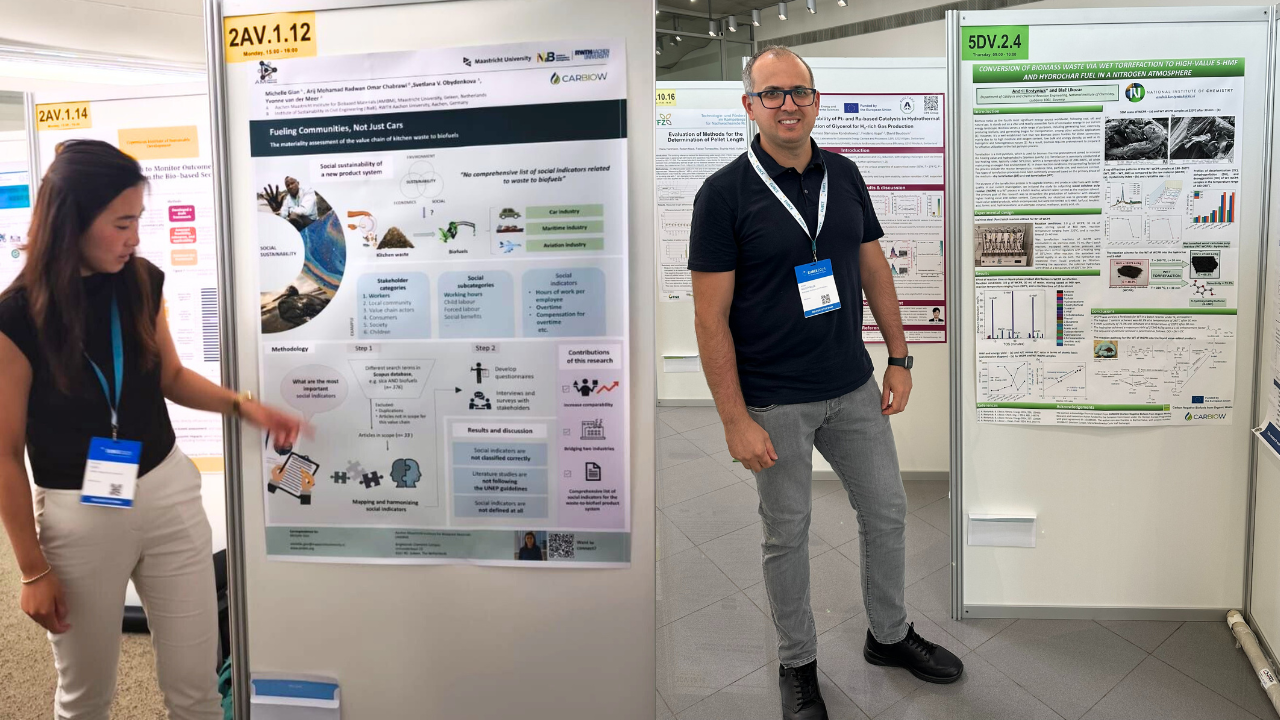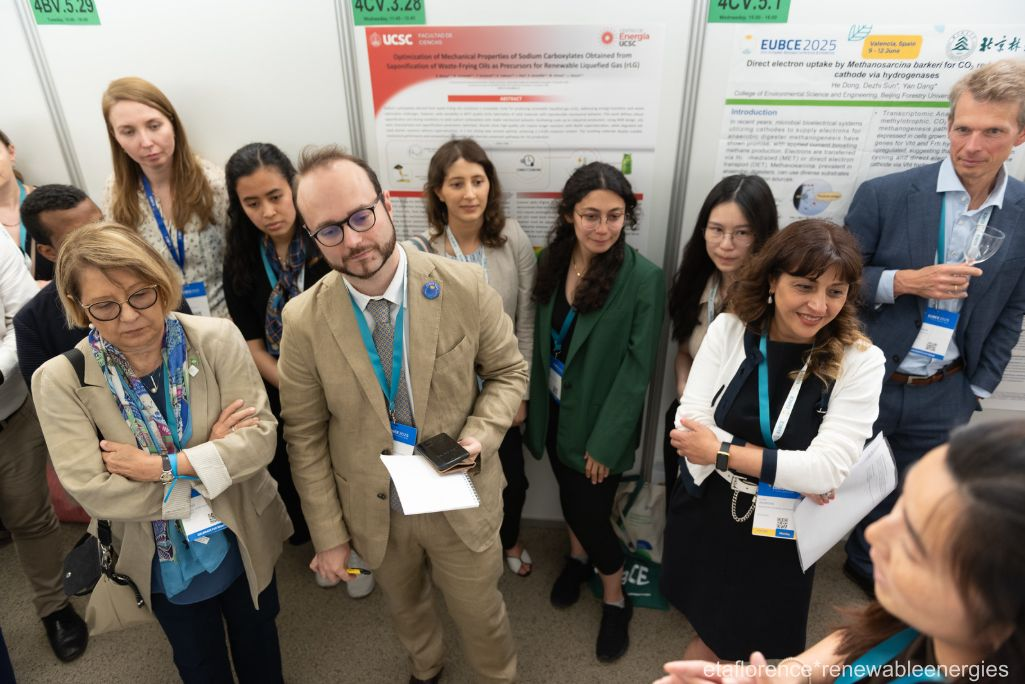
CARBIOW project’s activity at the 33rd European Biomass Conference & Exhibition (EUBCE), held in Valencia (Spain) from 9 to 12 June, has been very intense.
On Monday, June 9, our colleague Michelle Gian from Aachen-Maastricht Institute for Biobased Materials (AMIBM) joined the Conference to present a poster on the CARBIOW project.
Within the session entitled “Perspectives of Sustainability: Enhancing Socioeconomic and Policies”, Michelle discussed the materiality assessment of the value chain from kitchen waste to biofuels.
“The transition to sustainable supply chains requires balancing economic, environmental, and social considerations. While past efforts have prioritised environmental and economic impacts, social dimensions, such as labour rights and equity, are increasingly recognised as essential for comprehensive sustainability. The energy and transport sectors, which are major greenhouse gas (GHG) contributors in Europe, underscore the urgency of adopting alternative energy sources like biofuels to meet climate goals. Our research investigates the emerging value chain of converting household waste into biofuels, focusing on the often-overlooked social impacts”.
On Thursday, June 12, our colleague Andrii Kostyniuk from Kemijski Inštitut – National Institute of Chemistry participated in the session “New Trends in Hydrothermal Gasification and Carbonisation” with a second poster. His presentation, entitled “Conversion of Biomass Waste via Wet Torrefaction to High-Value 5-HMF and Hydrochar Fuel in a Nitrogen Atmosphere,” focused on wet torrefaction (WT) as one of the most eminent pretreatment methods for hydrochar production.
In their study, our colleagues examine how varying reaction conditions impact the WT process, focusing on changes in the surface morphology and elemental composition of the produced hydrochar.
“Wet torrefaction (WT) stands out among pretreatment methods for hydrochar production, presenting unique benefits that position it as a viable technology for transforming biomass waste into valuable platform chemicals [1-4]. In this study (Figure 1), we thoroughly examined how varying reaction conditions impact the WT process, focusing on changes in the surface morphology and elemental composition of the produced hydrochar. Additionally, we assessed the generation of value-added liquid products, including 5-hydroxymethylfurfural (5-HMF), highlighting the potential of WT to optimize both solid and liquid product yields”.
